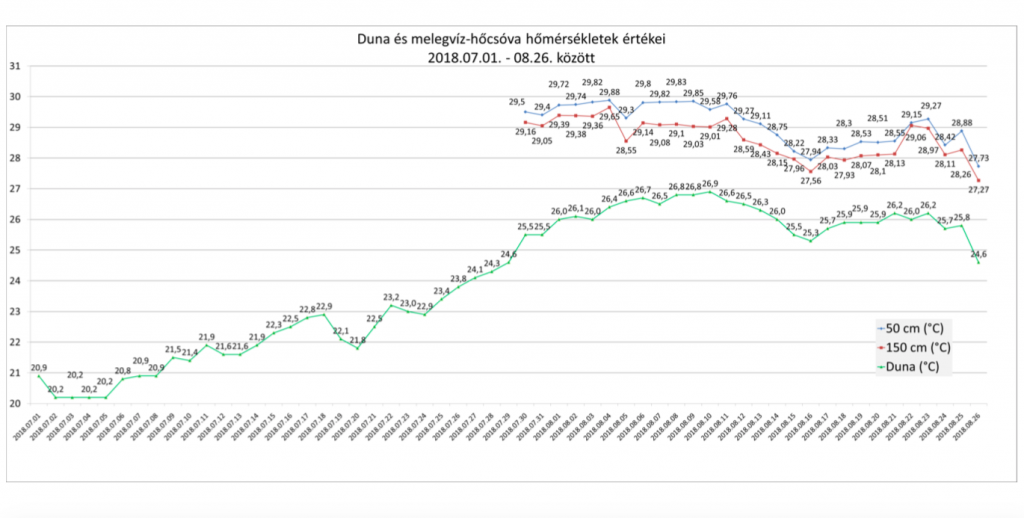The https://english.atlatszo.hu use cookies to track and profile customers such as action tags and pixel tracking on our website to assist our marketing. On our website we use technical, analytical, marketing and preference cookies. These are necessary for our site to work properly and to give us inforamation about how our site is used. See Cookies Policy
Water temperature near Paks nuclear plant was above 30 °C, dangerous for life in the river Danube
The water where the cooling water from the Paks nuclear plant enters the river Danube rose to above 30 °C during the recent heatwave, according to our measurements. We decided to go there and check the temperature ourselves because the nuclear plant was reluctant to give us the official data. We had suspected that the temperatures would rise above 30 °C, the temperature at which the plant is required to stop operations in order to protect life in the river.
According to a 2001 government decree, the Paks nuclear plant must cease operations if the temperature of the river Danube reaches 30 °C anywhere in the 500 meters following the point where the cooling water is deposited into the river. This decree was enacted in order to protect wildlife.
Energiaklub, a Hungarian NGO advocating for renewable energy, wanted to know how hot the water in Paks was during the recent heatwave in Hungary. They filed a freedom of information request but did not receive an answer.
In order to learn the temperature of the water, Atlatszo and a representative of Energiaklub drove to Paks last Friday, August 24th. Our measurements are not official. To achieve accuracy we used two thermometers and measured the river’s temperature a few kilometers North of Paks as well as at several points within the designated 500 meters downstream from the entry point of the cooling water.
The results of measurements upstream from the nuclear plant showed the water temperature to be 25-26 °C. Downstream, however, the temperature rose to above 30 °C at several points.
According to engineering professor János Ősz of the Budapest University of Technology (BME) it is common practice for nuclear plants to have a limit for the water temperature of the river where they dispose of their cooling water. For Paks the cutoff is set at 30 °C, but it can be lower. In France, for example, it is 28 °C and in the beginning of August some reactor blocks of three nuclear plants were stopped accordingly when the water temperature rose above that value.
According to news portal G7, the thermometers of the General Directorate of Water Management were broken because of the heat and the low water which made it impossible for them to monitor the water temperature every hour. They switched to one measurement a day, performed by hand at 7 every morning, the time when the water is the coolest.
Shortly after we published our findings and video in Hungarian, the company running the nuclear plant, MVM Paksi Atomerőmű Zrt. sent us its official water temperature data. On the day we measured the temperature to be over 30 °C the official thermometer measured 28.42 °C.
The nuclear plant registered the highest water temperature, 29.88 °C, at the beginning of August. This is only 0.12 °C lower than the temperature at which the nuclear plant must be stopped in order to protect life in the river.
While there was a difference between our data and that provided by the nuclear plant regarding the area downstream from the plant, the two datasets matched in regards to the area upstream: 25,7 °C.
According to a representative of the nuclear plant speaking to the evening news program of RTL Klub TV channel, the measurements of Átlátszó were faulty because we did not take them in the right place. Official measurements are taken from a boat in the middle of the river 50 centimeters deep in the water.
Written by Babett Oroszi
English version by Anita Kőműves, editing by Clare Humphreys
You can read the original, Hungarian language stories and see our video here and here.
The opening chart shows the official water temperateure data that Atlatszo and Energiaklub reeived from the nuclear plant.

